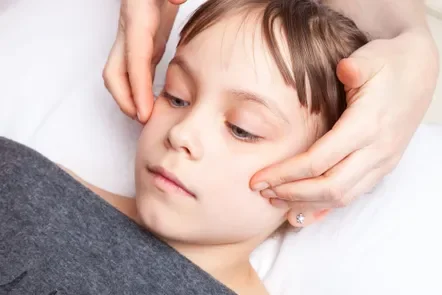
Osteopathy
Osteopaths are highly skilled practitioners of the musculoskeletal system, having completed a rigorous five-year university training to earn both a Bachelor's and a Master's degree. This extensive education provides a deep understanding of how all the body's systems are intricately connected. We follow the biopsychosocial model.
Osteopathy
Osteopathy's focus on the musculoskeletal system allows it to support wellness far beyond aches and pains. This holistic approach can effectively address a wide range of conditions, including digestive issues, respiratory challenges, overactive bladder, endometriosis, anxiety, and more.
Neck and back pain
Sciatica
Whiplash
Postural issues
Headaches and migraine
TMJ disorders
Bruxism
Shoulder, elbow and wrist/hands pain
Tennis and golfer's elbow
Some conditions treated include:
Carpal tunnel
Tendonitis/tendinopathy
Hip, knee, ankle and foot pain
Plantar fasciitis
Strains and sprains
Arthritis
Fibromyalgia
Muscle and joint pain (general)
Pregnancy-related discomfort
Chronic fatigue
If you are unsure if this approach is suitable for you, please get in touch with me here.
What to Expect in an Osteopathy Session
Initial consultation – Your initial appointment lasts approximately 45 minutes. During this time, we will review your medical history, discuss your current concerns, and conduct a comprehensive physical assessment, followed by treatment where appropriate. Relevant blood tests and imaging may also be reviewed to better inform your care.
Hands-on treatment – Osteopathy utilises safe, non-invasive techniques such as myofascial release, fascial manipulation, joint mobilisation, cranial osteopathy, visceral techniques, nervous system balancing, and dry needling. These approaches aim to reduce tension, enhance mobility, and support the body’s natural healing processes.
Each individual responds differently — some benefit most from very gentle techniques, while others respond better to a firmer approach. Open communication about your preferences is essential to ensure treatment is both effective and comfortable.
Individualised plan – Each treatment plan is individually tailored. Prior to commencing, I will explain the proposed approach and confirm your comfort with the process. Recommendations for exercises, stretches, or lifestyle modifications may also be provided to support recovery between sessions.
The number of treatments required varies according to individual presentation; follow-up appointments are scheduled based on your response and clinical needs. Once symptoms have improved, periodic reviews may be beneficial to maintain function, support balance, and reduce the risk of recurrence.
Clothing – Please wear light, comfortable clothing (such as leggings, shorts, or a singlet) to allow for easier assessment of posture and movement. At times, you may be asked to remove certain outer layers of clothing, but this will always be explained first and guided by your comfort. Your preferences are always respected throughout the process.
In Australia, Osteopaths hold a Master's degree in Osteopathic Medicine and are permitted to use the honorific title 'Dr' in recognition of their advanced, university-level clinical training. It is important to understand that Osteopaths are not medical doctors (GPs). As such, we do not diagnose diseases or prescribe pharmaceutical medications. We focus on the diagnosis and management of musculoskeletal conditions (that can be related to diseases).





